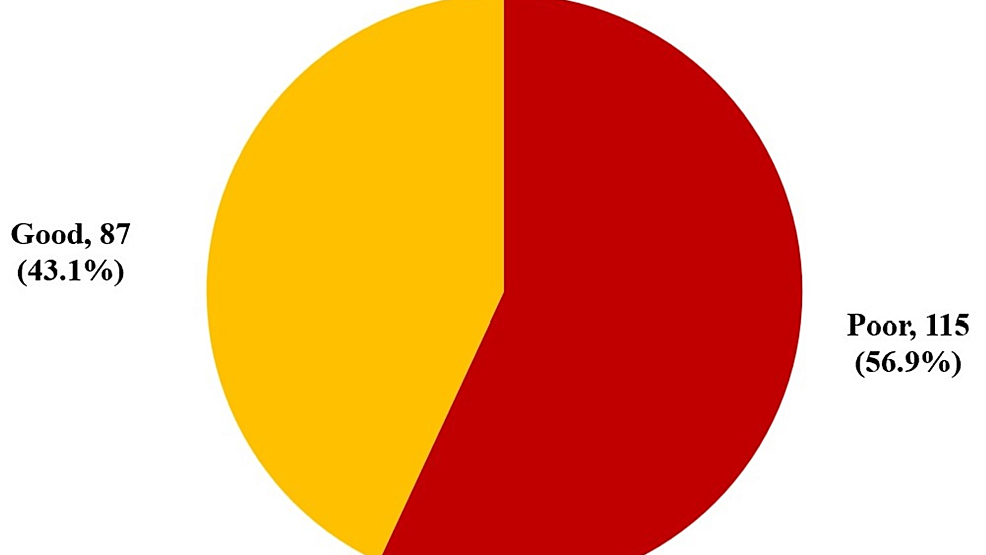Public Awareness and Attitudes Toward Stroke in Southern Saudi Arabia: A Call for Enhanced Education
Stroke is one of the leading causes of death and long-term disability around the world. It occurs when blood flow to part of the brain is interrupted, either due to a clot (ischemic stroke) or bleeding (hemorrhagic stroke). Without immediate treatment, brain cells begin to die, causing permanent damage or even death.
In Saudi Arabia, stroke has become a growing public health concern. With an incidence rate of 43.8 cases per 100,000 people annually, the impact is clear and concerning. As the population ages and risk factors like diabetes, high blood pressure, and smoking become more common, the need for prevention becomes even more critical.
A recent cross-sectional study published in Cureus explored the level of public awareness and attitudes toward stroke in the southern region of Saudi Arabia. The findings raise red flags about public knowledge, response behavior, and overall readiness to act in the event of a stroke.
Study Overview
This comprehensive study aimed to measure how well people in the southern region of Saudi Arabia understand stroke—its causes, symptoms, and appropriate emergency responses. Researchers used structured questionnaires to gather data from a wide range of participants with different educational and social backgrounds. The survey touched on everything from recognizing symptoms to knowing which actions to take when stroke signs appear.

The results reveal valuable insights into the strengths and weaknesses of public health education in the region.
Key Findings
1. Stroke Definition and General Knowledge
Understanding what a stroke is forms the foundation of effective response and prevention. However, the study showed that only 57.4% of participants could correctly define what a stroke is. Many were confused between stroke and other medical events like heart attacks or seizures.
This suggests a major need for clearer public health messaging that defines stroke in plain language, using visuals and examples for better understanding.
2. Awareness of Risk Factors
Knowing what causes strokes is the first step in prevention. The study found that:
- 55.8% of respondents correctly identified high blood pressure (hypertension) as a stroke risk factor.
- 45.8% recognized dyslipidemia (high cholesterol).
- 41.9% acknowledged smoking as a contributing factor.
Other key risk factors such as obesity, diabetes, sedentary lifestyles, and family history were less commonly mentioned, pointing to gaps in public education on lifestyle-related risks.
3. Recognition of Symptoms
The quicker a person can recognize stroke symptoms, the faster they can seek medical help, which is crucial in preventing brain damage. According to the study:
- 54.1% of participants identified a sudden, severe headache as a stroke warning sign.
- 51.0% noted dizziness as a possible indicator.
- 44.3% mentioned difficulty in speaking or slurred speech.
Other symptoms like sudden numbness, especially on one side of the body, vision problems, or confusion were less frequently recognized.
4. How People Respond to Stroke Symptoms
The good news is that most people know to seek help:
- 73.0% said they would contact a doctor immediately.
- 67.2% said they would go straight to the hospital.
However, a concerning 18.8% said they might ignore the symptoms or attempt self-medication, which can delay treatment and worsen outcomes.
Comparative Insights
These findings are not isolated. Similar studies in other regions of Saudi Arabia show parallel results:
- In Medina, only 42.6% could name at least two stroke symptoms correctly.
- Among Jazan University students, just 33.7% recognized weakness as a symptom, and only 21.9% identified speech difficulties.
This suggests that low awareness is a nationwide issue, not just limited to the southern region.
Why This Matters: Public Health Implications
Stroke is a time-sensitive emergency. The longer a stroke goes untreated, the more brain damage occurs. This concept is often summed up in the phrase, “Time is brain.”
When people fail to recognize symptoms or delay seeking care, they miss the opportunity for life-saving treatments such as clot-busting drugs, which must be given within a few hours of the first symptoms.

Poor awareness not only increases the risk of death but also contributes to long-term disability, which impacts families, communities, and the national healthcare system.
Recommendations for Improvement
Based on the study’s findings, several actions are recommended to improve stroke awareness:
1. Launch Targeted Educational Campaigns
Community-based awareness campaigns should focus on high-risk populations, especially the elderly and those with chronic health conditions. These campaigns should be simple, visual, and repeated regularly.
2. Utilize Media Effectively
TV, radio, and especially social media platforms can reach a wide audience. Short videos, infographics, and testimonials from stroke survivors can help make the message stick.
3. Empower Healthcare Professionals
Doctors, nurses, and pharmacists should take the lead in educating patients during routine visits. Hospitals and clinics can display posters and distribute brochures about stroke symptoms and prevention.
4. Integrate Stroke Education in Schools
Teaching basic stroke knowledge at the school and university level will not only inform young people but also allow them to educate their families at home.
5. Promote the FAST Method
The internationally recognized FAST acronym (Face drooping, Arm weakness, Speech difficulties, Time to call emergency services) should be translated into Arabic and widely promoted across the country.
Conclusion
The study conducted in southern Saudi Arabia clearly highlights a gap in public understanding of stroke. Although many people show awareness of some risk factors and symptoms, the knowledge is far from complete, and the response behaviors are inconsistent.
Improving stroke awareness through public education, healthcare engagement, and proactive media use can help save lives and reduce the impact of stroke on Saudi families and the healthcare system. This is not just a health issue—it is a community responsibility.
By acting now, Saudi Arabia can take meaningful steps toward preventing strokes and improving outcomes for thousands of individuals every year.
Do follow gulf magazine on Instagram
for more information click here



